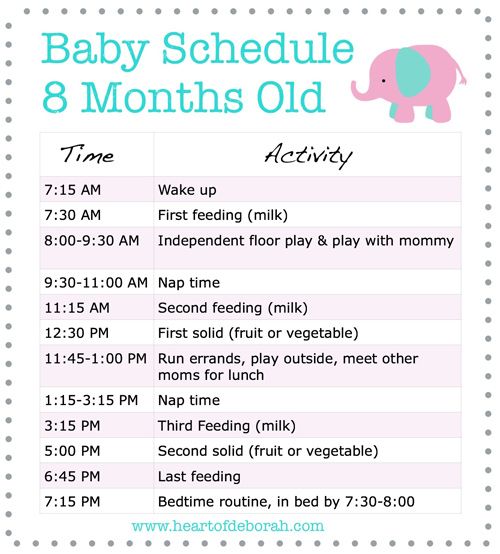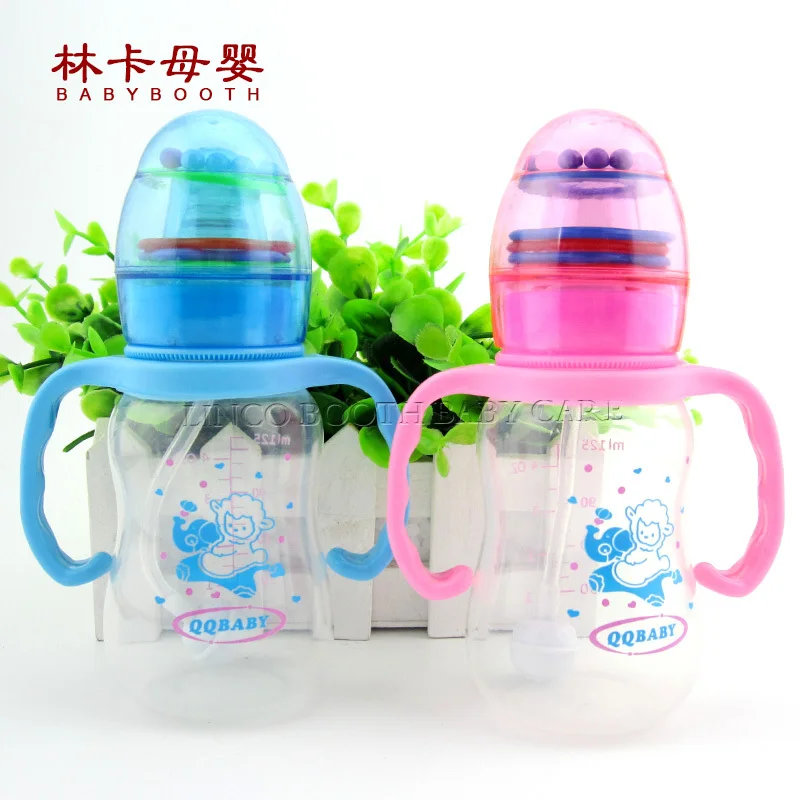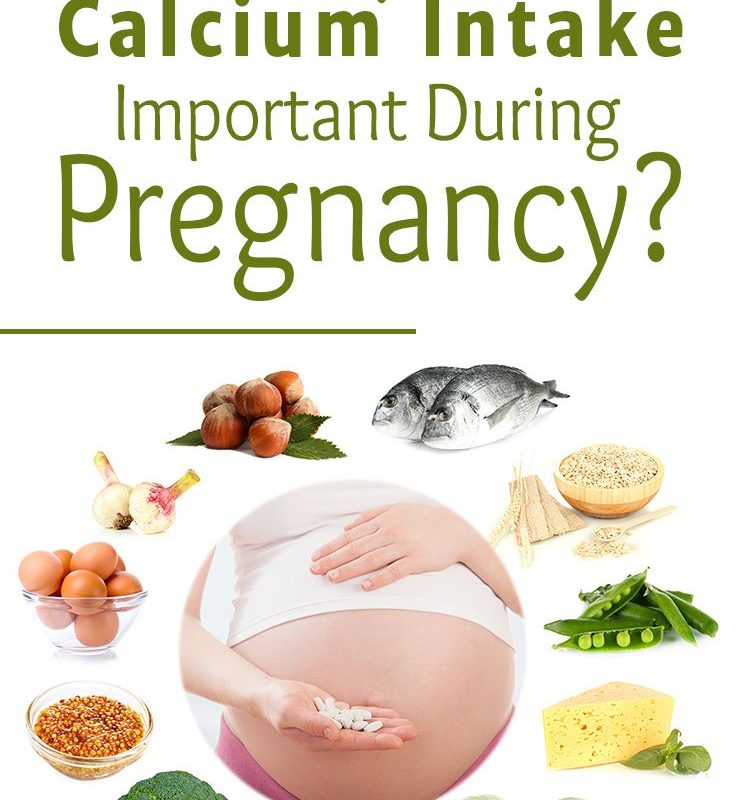Baby feeding for long time
Baby Nursing for an Hour and Still Hungry
Is your baby nursing for an hour and still hungry? See what to do when your baby is never satisfied after breastfeeding or nurses constantly.
Your baby never seems satisfied after breastfeeding.
Latching him on is fine, but after nursing 30 minutes on each side, he’s still crying for more. Despite lengthy feedings, he continues searching for your breast and shoving his fingers in his mouth. You’re worried he’s either not getting enough milk, or if he is, why he’s still crying for more.
It’s frustrating seeing him hungry all day, never mind that your nipples are raw and ached from the endless hours of latching him on. You’ve even tried giving a bottle of pumped milk after a long nursing session, where he’ll easily eat two or three more ounces.
He wants to nurse constantly, but falls asleep during a feeding session. When he finally stirs awake, he acts like he’s still hungry after breastfeeding. And when you have two other kids to care for, letting him nurse this long is all but impossible.
When your baby is nursing for an hour and still hungry
I can relate, mama. As a first-time mom, I assumed breastfeeding would be easy and natural. Instead, I faced blistered and bleeding breasts on top of a baby who wanted to breastfeeding constantly. Nursing would take an hour, which made me wonder whether he wasn’t getting enough milk from me.
Once he was finally done, he barely had enough time to be awake before it was time to feed him again. You can imagine why I felt like a milk factory, my baby attached to me 24/7.
I learned that a lengthy feeding session isn’t necessarily a sign that you’re not producing enough milk. Instead, this is your baby’s way of increasing your milk supply—the more you nurse, the more milk you produce.
We also have to remember that newborns have small tummies and that breast milk metabolizes quicker than formula. Those two factors are a recipe for constant nursing, whether in short bursts or, in this case, long sessions.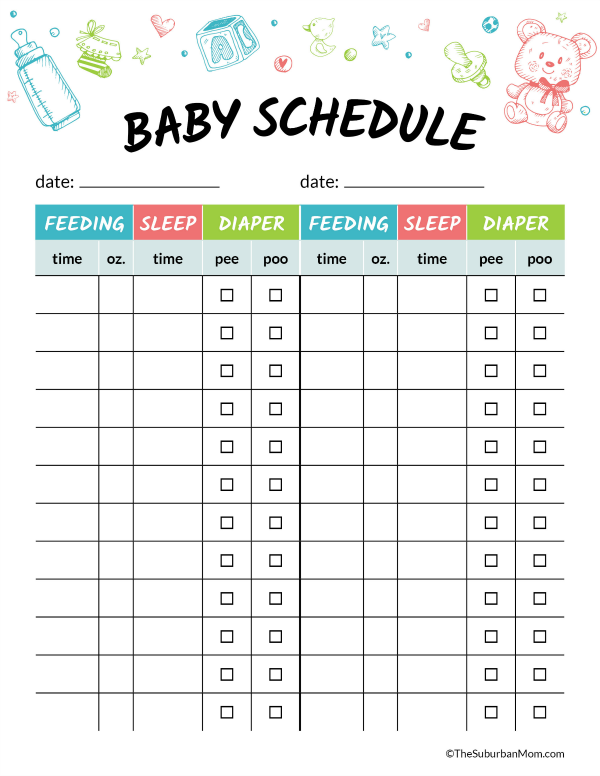
Still, this doesn’t make hour-long breastfeeding any easier. How do you cope when you feel glued to your baby all the time? Take a look at these tips to help you get through this stage. As these parents said about the article:
“Amazing. This helped me so much. Thank you!!!!” -Beatrice
“Thank you so much for this article because I was feeling like a failure.” -Rae
1. Keep your baby awake during feedings
The biggest culprit for hour-long nursing sessions? It’s likely that your baby is dozing off. Sure, it might look like he’s still nursing, especially when you see his mouth move. But he could simply be sucking to comfort or soothe himself to sleep instead of eating.
This is especially tricky with breastfeeding because you can’t see a decrease in milk the way you can with a bottle. And of course, when you take him off the breast, he cries either because he’s still hungry or he needs to suck to fall asleep.
To avoid this situation, make sure that he stays awake during feedings.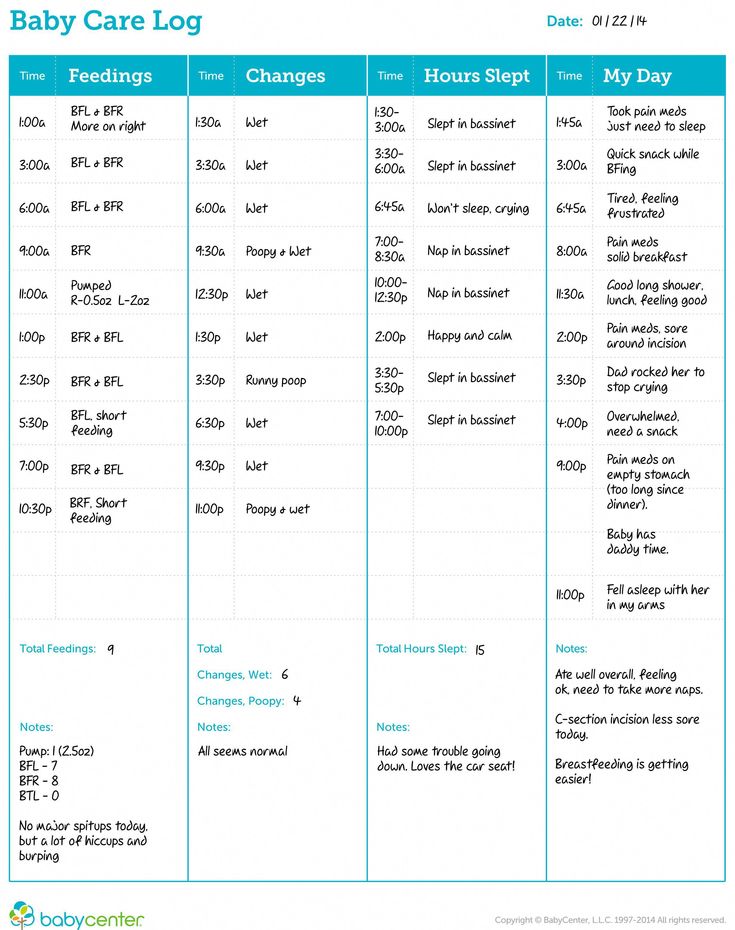 Change positions or burp him frequently, or tickle or talk to him while he eats.
Change positions or burp him frequently, or tickle or talk to him while he eats.
Then, make sure he’s actually eating by listening for a swallowing sound and looking for movement in his throat. Even though his mouth is moving, he may not be swallowing milk.
If he’s nursing for comfort, see if you can slip a pacifier in his mouth. This gives you a break while allowing him to comfort suck to sleep.
Even better: feed him after he wakes up, not to fall asleep. This way, he’s not relying on feeding to fall asleep, and is less likely to doze off while eating. Except for the bedtime and middle-of-the-night feeds, nurse him after he wakes up from sleep.
Free download: Do you struggle with getting him to sleep? His awake time just might be affecting how well he sleeps or not. Join my newsletter and grab your copy of One Mistake You’re Making with Your Baby’s Awake Time—at no cost to you.
Discover one mistake you may be making with his awake time. Don’t make the same mistakes I did—help him fall asleep with this one simple trick! Download it below:
Don’t make the same mistakes I did—help him fall asleep with this one simple trick! Download it below:
2. Empty each breast before switching
In the early days, I didn’t know that breast milk came in different stages.
The fore milk is the first to come out, which is more watery and easier to suck. The hind milk follows, and this is creamier, whiter, and fattier. You can see the difference between the two if you pump—the first few ounces are lighter and more watery.
Here’s the thing: the hind milk is more likely to fill up your baby, but if you switch too early to the other breast, he doesn’t get as much of it.
Instead, make sure to drain each breast so that he’s drinking from one side completely before switching to the other. This ensures that he’s getting both sides of the breast and that he’s filling up on his calories.
Get more breastfeeding secrets every mom should know.
3. Expel excess gas
I didn’t realize until later that my baby’s shrieks and cries sometimes had more to do with gas than the need to nurse.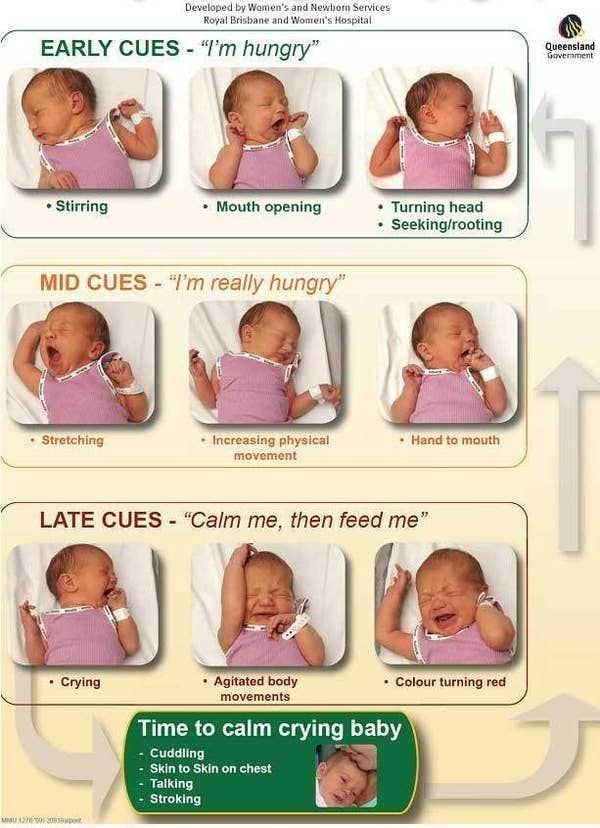 What I thought were cries for hungry were actually signs of his discomfort from having gas.
What I thought were cries for hungry were actually signs of his discomfort from having gas.
Before assuming your baby wants to feed some more, try and expel excess gas from his body. You might hold him upright to burp, sit him on your lap and lean him over, or hold him on your forearm, tummy side down.
You can also try to squeeze the gas out in farts by laying him down on his back. Then, gently move his right elbow toward his left knee, as if they were about to touch over his body. Repeat the same with the opposite limbs. This elbow-to-knee trick helped my baby fart a lot of gas that wouldn’t come out in burps.
Get more baby burping tricks that actually work.
4. Take extra care of your breasts
Disclosure: This article contains affiliate links, which means I will earn a commission—at no extra cost to you—if you make a purchase.
With constant nursing sessions, your breasts might not be getting a much-needed break. Still, you can squeeze in proper care so that it’s able to heal when your baby’s not nursing.
Still, you can squeeze in proper care so that it’s able to heal when your baby’s not nursing.
To start, apply lanolin cream (or your own breast milk) on your nipples before and after nursing sessions. This will add an extra layer of protection while you nurse and help your nipples heal after.
Then, try to air dry your breasts whenever possible. You might leave them exposed while you burp your baby, for instance, or take a nap without your top.
If going topless isn’t your thing, you can wear breast shells so that your nipples aren’t rubbing against your clothes. This allows them to heal without contact with your clothes, but still allowing you to stay covered.
Find out when breastfeeding tends to stop hurting for many moms.
Conclusion
Feeling frustrated is normal when your baby is nursing for an hour and still hungry for more. But rest assured mama, this will pass. You’re not doing anything wrong—nor are you destined for sleepless nights and blistered breasts.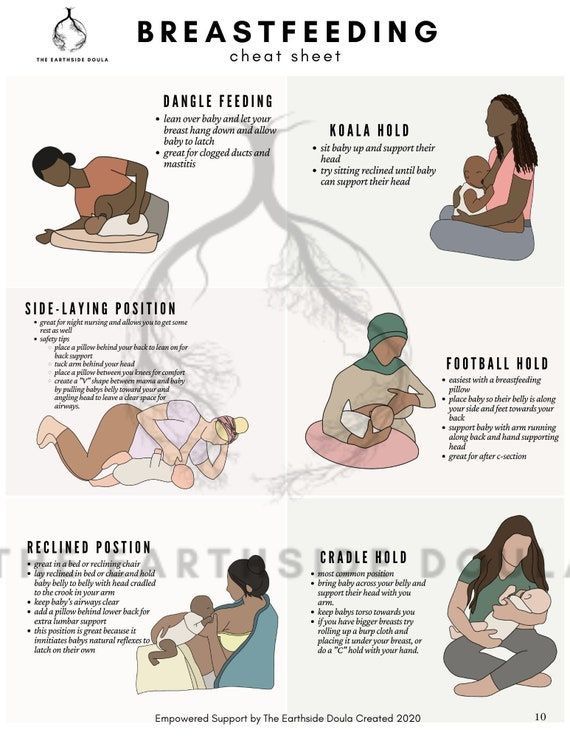
Instead, keep your baby awake during feeds to ensure that he’s actually eating. Empty each breast before switching so that he’s drinking the hind milk as well. See if you can expel gas, which is a common reason babies cry.
And lastly, don’t neglect caring for your breasts, as this will make whatever nursing sessions you have more bearable. Now you can make sure that your baby’s getting the milk he needs from breastfeeding—without taking an hour each time.
Get more tips:
- Baby Feeding Every Hour (And Not Sleeping, Either)?
- Newborn Life: Expectation vs Reality
- Newborn Tips and Tricks New Moms Need to Know
- 6 Ways to Handle Your Newborn Constantly Feeding
- How to Survive the 3 Month Old Sleep Regression
Don’t forget: Join my newsletter and grab your copy of One Mistake You’re Making with Your Baby’s Awake Time—at no cost to you:
Breastfeeding FAQs: How Much and How Often (for Parents)
Breastfeeding is a natural thing to do, but it still comes with its fair share of questions. Here's what you need to know about how often and how long to breastfeed your baby.
Here's what you need to know about how often and how long to breastfeed your baby.
How Often Should I Breastfeed?
Newborn babies should breastfeed 8–12 times per day for about the first month. Breast milk is easily digested, so newborns are hungry often. Frequent feedings helps stimulate your milk production during the first few weeks.
By the time your baby is 1–2 months old, he or she probably will nurse 7–9 times a day.
In the first few weeks of life, breastfeeding should be "on demand" (when your baby is hungry), which is about every 1-1/2 to 3 hours. As newborns get older, they'll nurse less often, and may have a more predictable schedule. Some might feed every 90 minutes, whereas others might go 2–3 hours between feedings.
Newborns should not go more than about 4 hours without feeding, even overnight.
How Do I Count the Time Between Feedings?
Count the length of time between feedings from the time your baby begins to nurse (rather than at the end) to when your little one starts nursing again. In other words, when your doctor asks how often your baby is feeding, you can say "about every 2 hours" if your first feeding started at 6 a.m., the next feeding was around 8 a.m., then 10 a.m., and so on.
In other words, when your doctor asks how often your baby is feeding, you can say "about every 2 hours" if your first feeding started at 6 a.m., the next feeding was around 8 a.m., then 10 a.m., and so on.
Especially at first, you might feel like you're nursing around the clock, which is normal. Soon enough, your baby will go longer between feedings.
How Long Does Nursing Take?
Newborns may nurse for up to 20 minutes or longer on one or both breasts. As babies get older and more skilled at breastfeeding, they may take about 5–10 minutes on each side.
How long it takes to breastfeed depends on you, your baby, and other things, such as whether:
- your milk supply has come in (this usually happens 2–5 days after birth)
- your let-down reflex (which causes milk to flow from the nipple) happens right away or after a few minutes into a feeding
- your milk flow is slow or fast
- the baby has a good latch, taking in as much as possible of your areola (the dark circle of skin around your nipple)
- your baby begins gulping right away or takes it slow
- your baby is sleepy or distracted
Call your doctor if you're worried that your baby's feedings seem too short or too long.
When Should I Alternate Breasts?
Alternate breasts and try to give each one the same amount of nursing time throughout the day. This helps to keep up your milk supply in both breasts and prevents painful engorgement (when your breasts overfill with milk).
You may switch breasts in the middle of each feeding and then alternate which breast you offer first for each feeding. Can't remember where your baby last nursed? It can help to attach a reminder — like a safety pin or small ribbon — to your bra strap so you'll know which breast your baby last nursed on. Then, start with that breast at the next feeding. Or, keep a notebook handy or use a breastfeeding app to keep track of how your baby feeds.
Your baby may like switching breasts at each feeding or prefer to nurse just on one side. If so, then offer the other breast at the next feeding. Do whatever works best and is the most comfortable for you and your baby.
How Often Should I Burp My Baby During Feedings?
After your baby finishes on one side, try burping before switching breasts. Sometimes, the movement alone can be enough to cause a baby to burp.
Sometimes, the movement alone can be enough to cause a baby to burp.
Some infants need more burping, others less, and it can vary from feeding to feeding.
If your baby spits up a lot, try burping more often. While it's normal for infants to "spit up" a small amount after eating or during burping, a baby should not vomit after feeding. If your baby throws up all or most of a feeding, there could be a problem that needs medical care. If you're worried that your baby is spitting up too much, call your doctor.
Why Is My Baby Hungrier Than Usual?
When babies go through a period of rapid growth (called a growth spurt), they want to eat more than usual. These can happen at any time. But in the early months, growth spurts often happen when a baby is:
- 7–14 days old
- 2 months old
- 4 months old
- 6 months old
During these times and whenever your baby seems extra hungry, follow your little one's hunger cues. You may need to breastfeed more often for a while.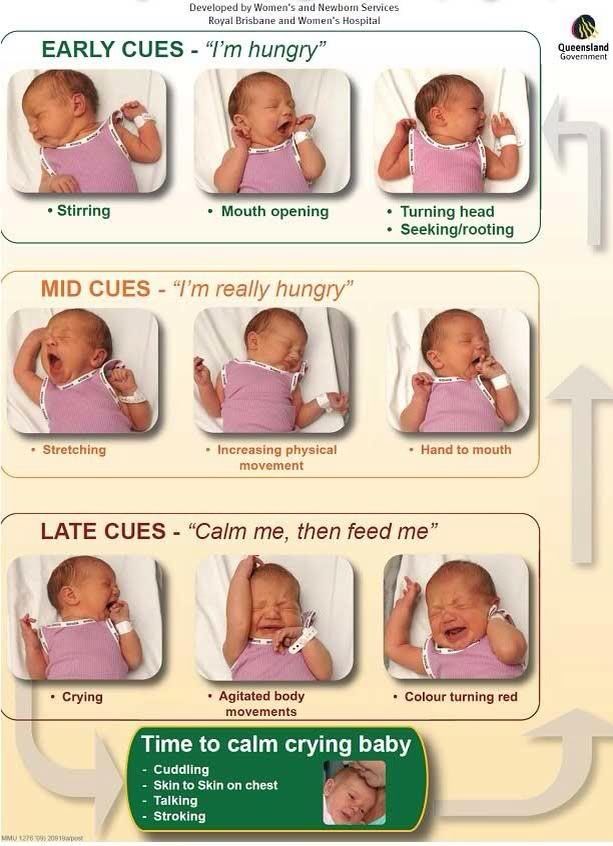
How Long Should I Breastfeed My Baby?
That's a personal choice. Experts recommend that babies be breastfed exclusively (without formula, water, juice, non–breast milk, or food) for the first 6 months. Then, breastfeeding can continue until 12 months (and beyond) if it's working for you and your baby.
Breastfeeding has many benefits for mom and baby both. Studies show that breastfeeding can lessen a baby's chances of diarrhea, ear infections, and bacterial meningitis, or make symptoms less severe. Breastfeeding also may protect children from sudden infant death syndrome (SIDS), diabetes, obesity, and asthma.
For moms, breastfeeding burns calories and helps shrink the uterus. In fact, breastfeeding moms might return to their pre–pregnancy shape and weight quicker. Breastfeeding also helps lower a woman's risk of diseases like:
- breast cancer
- high blood pressure
- diabetes
- heart disease
It also might help protect moms from uterine cancer and ovarian cancer.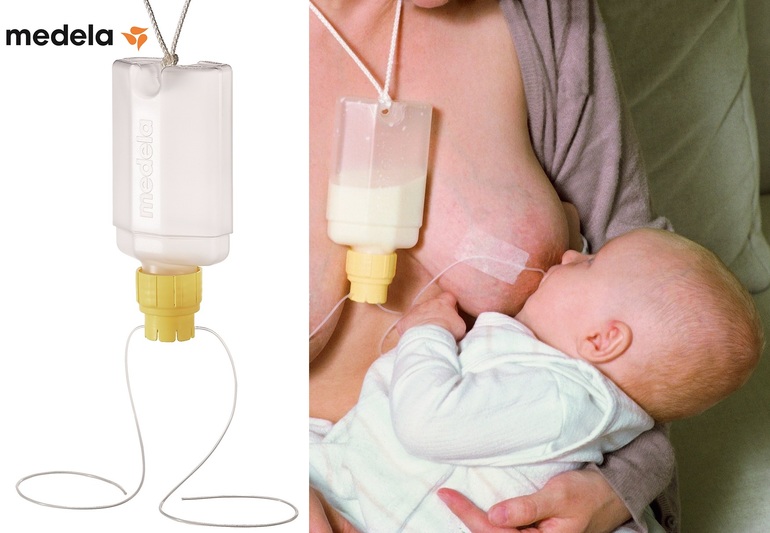
Breastfeeding on demand
You can often hear from a nursing mother: "I feed on demand, my baby requires a breast every 3.5 hours." Or: “I have always fed on demand. In a year, we already had 1 feeding in the evening, and my child calmly refused to breastfeed. Before talking about the demand of the child, it is necessary to find out what modern women mean when they say - "I breastfeed."
Modern mothers consider breastfeeding necessary for feeding their baby. Just for feeding. Breast milk is food, the mother supplies the baby with the nutrients necessary for growth and development. When a baby suckles at the breast, he eats. Breastfeeding makes sense only as a process of supplying proteins, fats, carbohydrates, vitamins and microelements.
During suckling, the baby receives the nutrients it needs with mother's milk. This is the absolute truth. There is another unconditional truth, which is not given any importance in modern society, it is not taken into account and is not considered.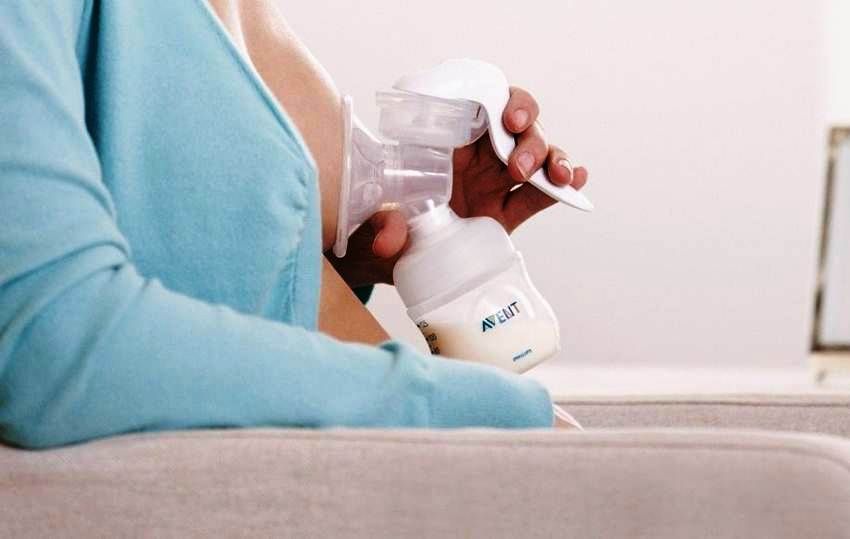 Breastfeeding for a child is communication with the mother. We need to figure out how the child understands feeding on demand? Can he understand anything at all? Is there any difference for him how he is fed, for 15-20 minutes after 3.5 hours or in some other way?
Breastfeeding for a child is communication with the mother. We need to figure out how the child understands feeding on demand? Can he understand anything at all? Is there any difference for him how he is fed, for 15-20 minutes after 3.5 hours or in some other way?
What is on-demand feeding
On-demand feeding of a newborn baby means putting it to the breast for every squeak or search. Squeak and search movements in newborns, even as early as the second or third day of life, begin to appear much more often than after 3.5 or 2.5 hours. The need for attachments increases rapidly, and by the 10-12th day of life, the need to attach to a child may occur 15-16 or more times a day. Applications vary in duration. The baby can fall asleep and sleep while sucking for, for example, 1.5-2 hours. Can release the breast after 1-2 minutes. And then ask her again. Why does a child need such frequent contact with his mother's breast?
That's why. Being in the mother's belly, in a calm, familiar environment, listening to the noises of the mother's body, being in a warm, cramped, confined space, the baby sucked his fist, fingers, loops of the umbilical cord, swallowed amniotic fluid.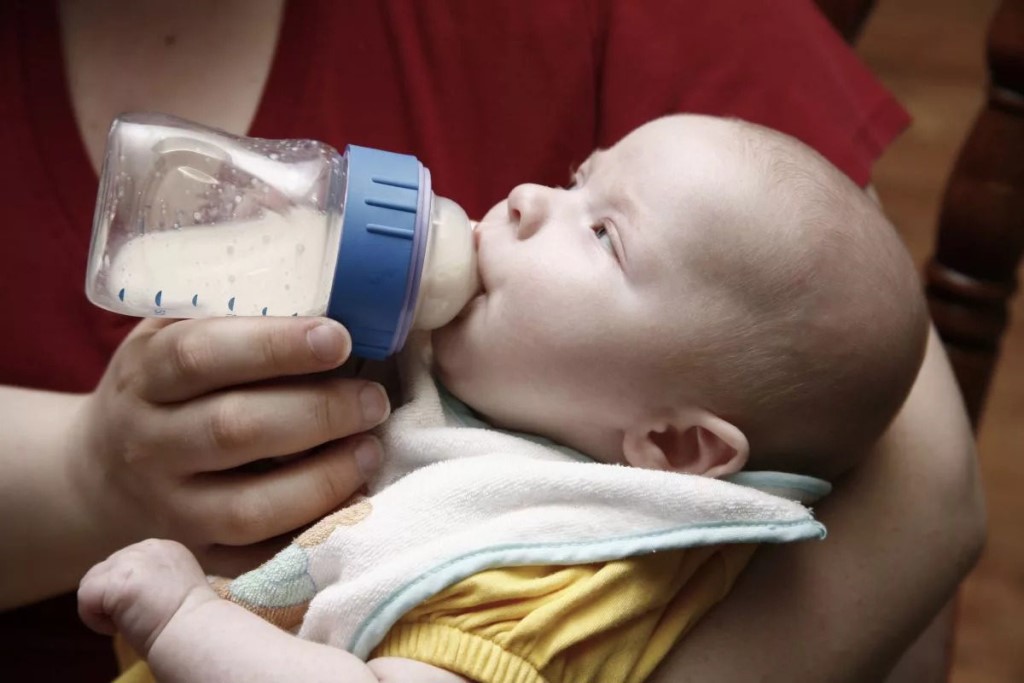 Learned to suck and swallow. After birth, experiencing discomfort for any, the most insignificant reason, the baby tries to get rid of it. You can get rid of discomfort by getting into the usual conditions of a comfortable stay. The only place where the baby after birth can feel the sensations familiar to him is in the arms of the mother. The only familiar action is sucking. The only familiar taste and smell is the taste and smell of milk and lube in the areola. Milk and lubricant have an odor and taste similar to the taste and smell of amniotic fluid. Therefore, experiencing discomfort, the baby squeaks, or begins to look for an object to suck with his mouth. Ideally, it is immediately applied to the chest. The baby becomes warm, cramped, he hears the beating of his mother's heart, breathing, grumbling in the intestines, he sucks and feels the familiar taste and smell. If such an action happens constantly, the baby gains confidence, no matter what happens, he will solve all his problems with his mother.
Learned to suck and swallow. After birth, experiencing discomfort for any, the most insignificant reason, the baby tries to get rid of it. You can get rid of discomfort by getting into the usual conditions of a comfortable stay. The only place where the baby after birth can feel the sensations familiar to him is in the arms of the mother. The only familiar action is sucking. The only familiar taste and smell is the taste and smell of milk and lube in the areola. Milk and lubricant have an odor and taste similar to the taste and smell of amniotic fluid. Therefore, experiencing discomfort, the baby squeaks, or begins to look for an object to suck with his mouth. Ideally, it is immediately applied to the chest. The baby becomes warm, cramped, he hears the beating of his mother's heart, breathing, grumbling in the intestines, he sucks and feels the familiar taste and smell. If such an action happens constantly, the baby gains confidence, no matter what happens, he will solve all his problems with his mother.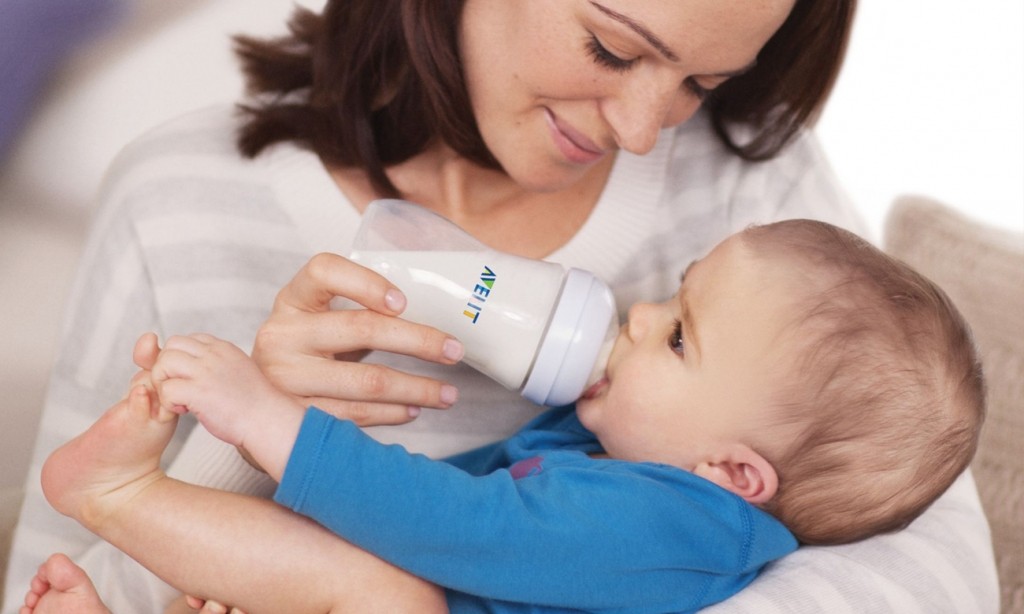 The place of comfort is now under the breast, and you can suck on the breast.
The place of comfort is now under the breast, and you can suck on the breast.
This whole process is biologically justified. A newborn child does not feel the feeling of hunger, this feeling is not formed in him. It will begin to form at about two months of age. How to feed a creature that does not experience hunger ?! How to encourage him to take some action to get food? This can be done only at the expense of some other incentives. This stimulus for the newborn is constant bodily discomfort, thanks to which he wants to suckle all the time! The most intense, frequent and prolonged sucking in infants is observed in the first two or three months of life. It is in these first months that the main weight gain of the baby occurs.
Feeding in the first month
Baby falls asleep with breast in mouth, sleeps sucking for a while. Falling asleep deeply, lets go of the chest. After sleeping for a while, he wakes up, and is applied on waking. After sleep, he can stay awake for some time, for example, an hour and a half. During wakefulness, he may feel discomfort 2-3 times, for example, from a completely natural desire to pee, and having called his mother for help, having kissed for a couple of minutes, he will do his deeds. Then he will want to sleep, feel discomfort and, kissing his chest, will again fall asleep sucking. After some time, he will wake up and attach again. Then again a little "walk". And after some time, he will fall asleep at the chest again.
During wakefulness, he may feel discomfort 2-3 times, for example, from a completely natural desire to pee, and having called his mother for help, having kissed for a couple of minutes, he will do his deeds. Then he will want to sleep, feel discomfort and, kissing his chest, will again fall asleep sucking. After some time, he will wake up and attach again. Then again a little "walk". And after some time, he will fall asleep at the chest again.
The daytime naps of a one-month-old infant feeding on demand vary in duration and number. There can be 4-6 dreams during the day, and they can last from 5-15 minutes to 2-2.5 sometimes 3 hours. "Around" each dream, the baby is applied to the chest, and applied between dreams several times. At night, the child falls asleep at the breast. Usually in the early morning hours, he begins to fuss and apply. In the morning, he almost never fully wakes up. The baby sleeps, from time to time, sucking on his mother's breast. Waking up in the morning, the baby is again applied to the chest. If you count all the attachments that have happened in a baby of one month of age, then approximately 16-20 attachments are obtained. This is how a newborn human cub behaves if it is given the opportunity to behave in accordance with physiological and psychological needs, which, by the way, are genetically determined. The child of the first months of life does not separate his personality from the personality of the mother and from her breast. Mom and her breasts, and everything connected with them, are the universe of the baby and himself.
If you count all the attachments that have happened in a baby of one month of age, then approximately 16-20 attachments are obtained. This is how a newborn human cub behaves if it is given the opportunity to behave in accordance with physiological and psychological needs, which, by the way, are genetically determined. The child of the first months of life does not separate his personality from the personality of the mother and from her breast. Mom and her breasts, and everything connected with them, are the universe of the baby and himself.
In most cases, a modern woman, being afraid to “accustom a child to hands”, strives to limit his requests for suckling. A pacifier and a bottle of tea or water come to her aid in this matter. They, too, can be sucked ... The need for sucking seems to be satisfied. But only the need for communication with the mother during suckling is not satisfied, the peculiar chain of mutual assistance and cooperation between mother and baby is destroyed, the formation of maternal affection and concentration is disrupted. Is the difference in the two actions noticeable to the reader: the baby cried, the mother took him, put him to her chest and started rocking him, or gave him a pacifier and started rocking the stroller, even with the words “Why are you crying, my sun?”
Is the difference in the two actions noticeable to the reader: the baby cried, the mother took him, put him to her chest and started rocking him, or gave him a pacifier and started rocking the stroller, even with the words “Why are you crying, my sun?”
The modern woman who gives a pacifier and pumps a stroller is not a bad person deliberately harming an infant. She is simply in captivity of prejudices regarding the relationship between mother and baby. She does not know how to behave correctly, does not know what to do in accordance with the natural needs of the child. If you tell her what the child really needs, she will exclaim in horror: “What is it, don’t let him get away with?!” Indeed, the child of the first months of life must not be let off the hook. For a woman who does not know how to comfortably carry a baby, and who does not know how to feed him in various positions (sitting, lying, standing and even moving), this can be very difficult. Especially if she is not sure of the correctness of her actions.
An action that should become automatic for the mother of a newborn: when the baby cries or shows other signs of anxiety, put the baby to the breast.
What's next?
The baby is growing. A fairly stable rhythm of daytime sleep begins to form in him, and a 3-4-month-old baby behaves quite differently from a newborn. Feeding on demand at this age looks something like this...
- At three months, the baby has 10-12 feeds during the day and 2-4 at night. There are frequent applications for a short time, but their number is reduced. There may be a long night break in feedings, about 5 hours, but this is very rare. Much more often the night break is 2.5-3.5 hours. By this age, the baby's body is noticeably rounded.
- At four months, the baby begins to breastfeed noticeably less frequently. The main feedings are associated with sleep: the baby suckles before bedtime, during awakening and during sleep, both daytime and nighttime. In this regard, he has a fairly accurate feeding regimen.
 And many babies stop breastfeeding when they wake up after daytime sleep, sometimes as early as 2.5-3 months.
And many babies stop breastfeeding when they wake up after daytime sleep, sometimes as early as 2.5-3 months. - At five months, the baby has 8-10 daytime feedings and 2-3 nighttime, attachments as well as in the fourth month of life, are organized around dreams - the baby eats when going to bed and some babies suck during awakening.
- At six months, the feeding regimen changes. The most active sucking shifts to the last 2-3 hours before waking up from a night's sleep. The period of daytime wakefulness can be divided into two periods: in the morning, when the baby sucked during the night is rarely applied to the breast, and in the evening, when attachments become very frequent. In total, there can be 7-10 day applications and 3-4 night applications. At this age, the baby begins a period of acquaintance with new food - pedagogical complementary foods. Sometimes there are attachments associated with the introduction of complementary foods, the baby “washes down” samples of new food with mother's milk.
 But many children do not want to drink complementary foods. When complementary foods are introduced to an on-demand baby, it is never meant to replace feedings with complementary foods. This is practically impossible, because the main feedings of the baby are associated with sleep, and mother's breakfasts, lunches and dinners, during which the baby gets acquainted with new food, are located between the baby's dreams, during his wakefulness.
But many children do not want to drink complementary foods. When complementary foods are introduced to an on-demand baby, it is never meant to replace feedings with complementary foods. This is practically impossible, because the main feedings of the baby are associated with sleep, and mother's breakfasts, lunches and dinners, during which the baby gets acquainted with new food, are located between the baby's dreams, during his wakefulness. - At seven months, the frequency of application is about the same.
- At eight months, the feeding regimen changes. Since the baby shows high motor activity and is very busy exploring the surrounding space, in the daytime he forgets to breastfeed. In this regard, the number of daily feedings can be reduced to 6-8 times. The baby compensates for the reduction in daytime feedings by increasing the frequency and duration of nighttime feedings up to 6 times.
- In the second half of the year, babies who stopped breastfeeding when waking up after daytime naps recall this habit again.
 The baby’s daytime sleep in the second half of life, as well as in the region of a year and older, looks something like this: the baby falls asleep sucking, sleeps quietly for a while, for example 1-1.5 hours, then starts tossing and turning, fiddling, worrying, at this moment the mother lies down next to , gives him a breast and the baby can fill up 10-15-30 minutes sucking. Mom may well use this time for her own rest - lie down, read, while the baby sleeps while sucking. I know my mother, a lover of embroidery, who used this time specifically for embroidery ...
The baby’s daytime sleep in the second half of life, as well as in the region of a year and older, looks something like this: the baby falls asleep sucking, sleeps quietly for a while, for example 1-1.5 hours, then starts tossing and turning, fiddling, worrying, at this moment the mother lies down next to , gives him a breast and the baby can fill up 10-15-30 minutes sucking. Mom may well use this time for her own rest - lie down, read, while the baby sleeps while sucking. I know my mother, a lover of embroidery, who used this time specifically for embroidery ... - Breastfeeding becomes more frequent at nine to ten months. In the daytime, this is 4-6 full feedings and about the same number of attachments for various reasons. The baby has new reasons for attachment. If, during active actions to master the world, the baby fills a bump or gets scared, he calms down with his mother's breast. There may be situations when you can comfort the baby by sitting next to him and hugging him.
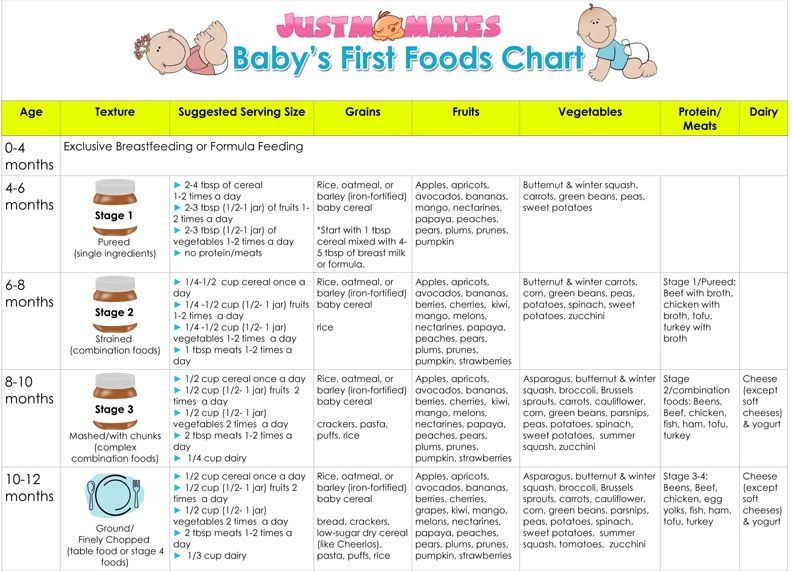 At night, 4-6 feedings remain, the baby begins to suckle more actively in the morning between 3 and 8 hours.
At night, 4-6 feedings remain, the baby begins to suckle more actively in the morning between 3 and 8 hours. - At eleven months, a baby can already have 2-3 complete complementary foods. Initiation to adult food in the mind of a child is not associated with breastfeeding: attachment to the mother's breast is something other than the desire to get enough of the product they like. As a rule, after the baby has eaten, he feels the need to attach himself to the breast. The number of daily feedings remains the same in the child, but the number of short-term attachments increases. There are active mid-morning feedings between 4 and 8 o'clock in the morning.
- At ten or twelve months, the baby, if he is already walking, can sometimes breastfeed every time he comes to his mother, i.e. about every 15-30 minutes. Attachments around dreams and night sucking persist. Therefore, if a mother says that a child suckles once or twice a day, this means that there is no feeding at the request of the child.
 There are restrictions imposed by the mother, with which the baby has come to terms. He treats breast sucking like food, sucks on a pacifier or a finger to fall asleep or soothe, or falls asleep just like that, without calming down.
There are restrictions imposed by the mother, with which the baby has come to terms. He treats breast sucking like food, sucks on a pacifier or a finger to fall asleep or soothe, or falls asleep just like that, without calming down. - At twelve months, the baby is applied in about the same way.
- At the age of one and a half years, there may already be one daytime nap, so there are fewer attachments associated with sleep. Preserved for morning sucking. The baby is very free with his mother's breasts. Sometimes it happens that he comes up to suck just for fun. For example, like this: he comes up, climbs on his knees, looks into his mother’s face, smiles, starts to swarm in his shirt, gets breasts, smiles at his breasts, sucks for 30 seconds and leaves.
As for the number of feedings per day when feeding a child on demand, their number is almost never less than 12. A newborn has 12 or more attachments, mostly they are all associated with dreams. And a child, say 1. 5-2 years old, can also have about 12 attachments, only 3-4 are associated with sleep, and the rest are short-term attachments for various reasons. I suggest to all mothers reading this text - do not count the application, do not notice their duration. Breastfeed your baby as often as he asks, when you feel the need to.
5-2 years old, can also have about 12 attachments, only 3-4 are associated with sleep, and the rest are short-term attachments for various reasons. I suggest to all mothers reading this text - do not count the application, do not notice their duration. Breastfeed your baby as often as he asks, when you feel the need to.
Moms who don't think about breastfeeding without looking at the clock may get the impression that when breastfeeding on demand, the mother can do nothing but feed the baby. This is not true. After the birth of a baby, a mother begins another life, she is called life with a baby. That's all. The child is with the mother, not the mother with the child! Feel the difference! You need to be able to organize your life in a different way, in the first months, of course, the help of loved ones is very necessary. In the tradition of many peoples, it was customary for the first 40 days after childbirth to remove a woman from any housework and household chores, she was engaged only in a child. In some nations, objects that the mother of a newborn touched were considered “unclean”, therefore, they preferred to protect the mother from the rest of the household, allocating her a separate “corner” of the house, where no one bothered her and she did not interfere with anyone. Among the Slavs, such a restrictive custom was called a six-week. By 1.5-2 months, the rhythm of daytime dreams begins to form, and the baby has a kind of “regime”, the mother becomes more free.
In some nations, objects that the mother of a newborn touched were considered “unclean”, therefore, they preferred to protect the mother from the rest of the household, allocating her a separate “corner” of the house, where no one bothered her and she did not interfere with anyone. Among the Slavs, such a restrictive custom was called a six-week. By 1.5-2 months, the rhythm of daytime dreams begins to form, and the baby has a kind of “regime”, the mother becomes more free.
For a mother who can't imagine breastfeeding without looking back at the clock, and who is sure that the “right” baby is the baby lying quietly in her crib all the time, feeding on demand will be a complete hassle. It will be much easier for such a mother if she stops looking at the clock and ties the baby to herself with a large scarf or uses a patchwork holder (sling). It will become easier for her if she stops running between the nursery and the kitchen, but takes the baby with her to the kitchen and carries him around the house with her, doing housework, in a box, a cradle, a special chair, if she tries not to put him off often, and pick up as soon as possible, postponing the baby only in case of emergency and not for long.
Breastfeeding is not the same as house arrest. In the conditions of modern society, it is possible to organize the exit of a nursing mother to work from about 6 months of age of the baby. If necessary, you can start working from the age of 4 months, but, of course, it is better not every day of the week and not full time. It is the responsibility of a breastfeeding consultant to help a mother organize her return to work.
Sometimes, when I advise mothers on breastfeeding, I suggest that they forget for a second that they are already living in the 21st century. I propose to return, for example, to the cave and ask what they will do if the child woke up at night, how to calm him down? If you are walking through the forest and trying not to attract the attention of predators, how to make the baby silent? If the child is thirsty, what will you give him? What is the baby used to, for thousands of years of its existence? To the fact that he sleeps on his mother while she wanders through the forest with a digging stick in search of roots, and wakes up when mother stops. Since mom stopped, then there is time to wake up and suck. Therefore, even now the child sleeps well, tied to the mother with a patchwork holder, wakes up when the mother, having done a few household chores, sits in a chair to take care of the baby.
Since mom stopped, then there is time to wake up and suck. Therefore, even now the child sleeps well, tied to the mother with a patchwork holder, wakes up when the mother, having done a few household chores, sits in a chair to take care of the baby.
Some mother, reading about the cave, will be offended, saying that she is a civilized creature. But please think. Man, mother's breast and mother's milk have been created by evolution over millions of years. They are made for each other. Baby food has created progress and more recently. The skills of motherhood and breastfeeding have also been lost by our society quite recently. A person is not physiologically adapted to artificial feeding and a pacifier. The mother's breast will not produce enough milk at 6-7 feedings per day. Nature did not know, when creating man as a mammal, that the time would come when the need for breastfeeding would be satisfied by some kind of pacifiers and nipples.
Changes that occur during the formation of the personality of a child who did not have full contact with the mother during prolonged breastfeeding are noted by modern research by psychologists and sociologists. These are changes with a minus sign. It would be better if they were not, these changes.
These are changes with a minus sign. It would be better if they were not, these changes.
Breastfeeding is not only important for the baby, it is also important for the mother. During on-demand feeding, the woman's feelings change, a stronger attachment to the baby is formed, the woman becomes more sensitive to the needs of the baby. Deeper affection and understanding are not only preserved in infancy. They persist for life. For clarity, imagine what happens to a woman’s feelings if she tries to “withstand” a child, endures his crying, anxiety. What happens to a woman if she uses the recommendation from one very popular parenting book: "Go to the child if he cries for more than 15 minutes"? Speaking in abstract terms, humanity is interested in reviving the practice of breastfeeding. The revival of this practice is impossible without mothers realizing the true reasons for the child's need for attachment to the breast.
Lilia Kazakova, pediatrician,
breastfeeding and childcare counselor leader
Why is it important to breastfeed a baby for a long time?
Skip to content
The progress of civilization interferes in all spheres of life, including motherhood. In many circles, a mother who feeds her baby naturally is more surprised than a mother who uses a bottle and formula. . When a child is 6 months old and his mother does not wean him, he is often asked the question: It happens that an affirmative answer can cause indignation, surprise, and a woman can be accused of selfishness and possessiveness ... Why?
In many circles, a mother who feeds her baby naturally is more surprised than a mother who uses a bottle and formula. . When a child is 6 months old and his mother does not wean him, he is often asked the question: It happens that an affirmative answer can cause indignation, surprise, and a woman can be accused of selfishness and possessiveness ... Why?
9% of Polish mothers breastfeed during the first 24 months of a child's life.
What are the recommendations of reliable doctors?
The World Health Organization recommends exclusive breastfeeding for the first full 6 months of life . Then you should expand the diet with local additional products. In developing countries, breastfeeding is recommended for at least 3 years or more, especially for children with allergies. Nutritionists believe that in accordance with the natural process of development going on for centuries, There should be a smooth transition from exclusive breastfeeding to supplementing the infant's milk diet with other foods.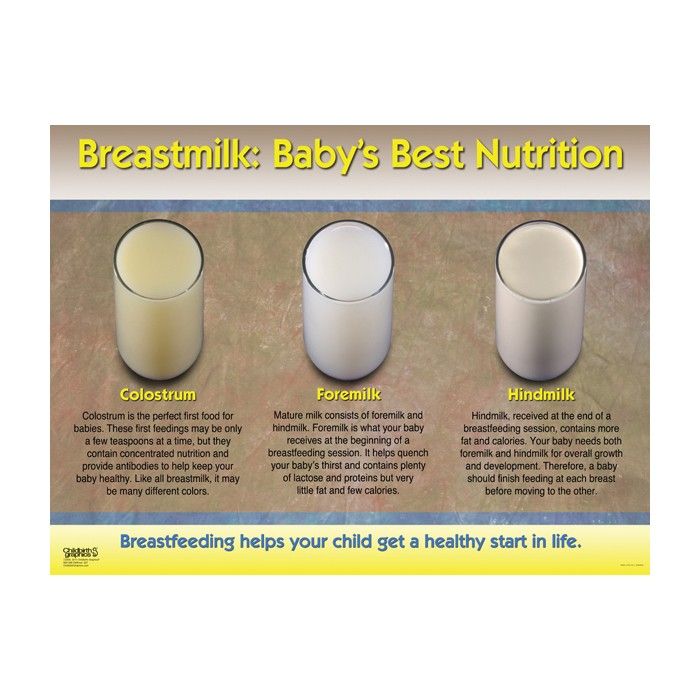 . In the second half of a baby's life, it should only be tasting, familiarizing with new textures, smells, tastes, so that they make up only a third of the entire diet (up to about 12 months). Proportions should change gradually. At about 24 months of age, breast milk makes up one third of a baby's diet. .
. In the second half of a baby's life, it should only be tasting, familiarizing with new textures, smells, tastes, so that they make up only a third of the entire diet (up to about 12 months). Proportions should change gradually. At about 24 months of age, breast milk makes up one third of a baby's diet. .
Where did the idea to breastfeed the baby come from?
Man belongs to the mammalian species. The larger individuals of this group stop feeding their young when they reach four times their birth weight - in humans this happens around 27 to 30 months of age. In primates, weaning occurs even later—when the young reach a third of their adult weight, or when they erupt their first permanent teeth—in humans, this occurs between the ages of 4 and 7.
The conducted research shows that 2.5 years of breastfeeding is the minimum for a child to get the most physical, developmental and emotional benefits. . Nutritional and immune deficiencies caused by early cessation of nutrition, civilization is trying to compensate with antibiotics, vaccines, excessive hygiene.
Nutritional and immune deficiencies caused by early cessation of nutrition, civilization is trying to compensate with antibiotics, vaccines, excessive hygiene.
Is there any value in milk after 6 or even 12 months of breastfeeding?
The main myth faced by long-term breastfeeding mothers is the myth of worthless water flowing from the breast, which turns into breast milk.
With great wisdom, Janusz Korczak called mother's milk white blood, because it contains blood cells, which are also responsible for immunity. Breast milk contains a whole complex of anti-infective substances, including secreted immunoglobulin, which forms the main barrier on the mucous membrane of the digestive and respiratory systems and provides a multi-level fight against viruses and bacteria - most of this substance is found in colostrum. The level of some immunoglobulins rises, reaching the same high level at the 2nd month of lactation as at the XNUMXth week of breastfeeding.
Early stimulation of the immune system protects the baby both during breastfeeding and many years after it is stopped. Long-term breastfeeding provides resistance to many diseases, including those considered civilizational diseases, such as ulcerative colitis. With the duration of breastfeeding (a year or more), the risk of developing diabetes is halved. Breastfeeding between 12 and 36 months of age also cuts the risk of death from respiratory disease by half compared to formula-fed babies. Substances responsible for the digestion of milk are produced in the child's body until the age of five or six, when children develop immunity that is more similar to the immunity of adults. It is in years, not months, that we measure long-term breastfeeding with multifaceted benefits.
Motherland
Love knows no age. This is important to know, especially for parents.
School adaptation, Education, Natural learning processes
How does the brain learn and how can school support natural learning processes?
Education, Natural learning processes, Child development, Intellectual development
How does the brain learn? How do children learn?
The amount of milk decreases over time, but its quality improves, the number of immune organs increases, the composition of milk is optimized for the needs of an older child.

An important aspect of long-term breastfeeding is also the response to the huge emotional needs of the baby . The affection and closeness felt by the baby during feeding is an introduction to learning to show affection.
And what do we have left at work?
A child in the post-infancy period is very involved in learning about the world and sucks less and less during the day - so the mother's going to work is not an obstacle to long-term feeding. An older child breastfeeds most frequently during the day, evening, and night.
Doesn't a mother make a child dependent on herself by breastfeeding for so long?
The child develops rapidly cognitively and physically, but emotionally it is much slower. A small child has the right to be attached to his loved ones, and there is nothing wrong with that. It is enough to let him develop calmly, so that over time he becomes more and more independent. Long-term breastfeeding contributes to a balanced emotional development and is not bad for the character of the child. .
Long-term breastfeeding contributes to a balanced emotional development and is not bad for the character of the child. .
It has been observed that children fed for a long time are more confident in themselves, more easily establish contacts with the environment and are free from excessive fears associated with exploring the world.
Until what age can a baby want to breastfeed?
The baby will suckle until he needs it for proper development. It depends on many factors, for example, on the condition of the baby, character, temperament.
Will it come out by itself? Can we help him finish this phase of his life?
First of all, we must be sure that we provide our child with the best and in the way that nature has made it possible. In order not to disturb the natural process, one should beware of impatiently waiting for the right moment. fear that this will never happen, blaming breastfeeding for the sometimes difficult to understand behavior of the child, sadness due to manifestations of social rejection.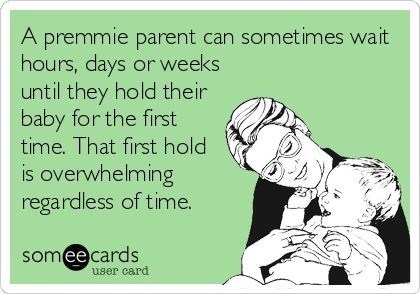
At about 2 years of age, the baby usually suckles briefly during the day, and if he has illnesses, he has longer sessions before bed, at night and during illness, for example, illness. During this time, it can be observed that, regardless of the efforts of the parents, the child has periods of aversion to non-dairy foods, punctuated by days when he eats willingly, a lot and with pleasure. This can take many months and is due to the maturation of the digestive organs, the acquisition of the ability to chew, the gradual development of the immune system, the high emotional immaturity of the child . All of these conditions are perfectly normal, and rather slowly, as development progresses, non-dairy foods will play an increasingly important role in your child's nutrition.
Each child is individual and he has his own pace of development, including in terms of food . The body of a healthy, unresponsive child will be ready to give up milk earlier than one weighed down with allergies, with impaired defense mechanisms, with increased emotional needs.
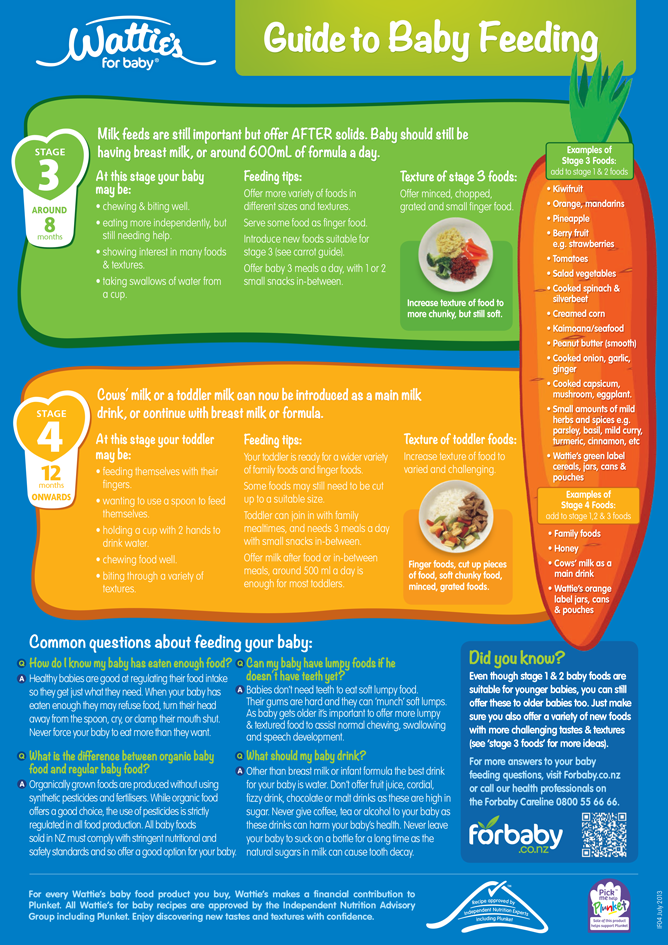
At the age of 24 to 36 months, the child is so absorbed in learning about the world that he often forgets about dairy dishes and returns to them mainly during illness, when he is very tired, at night and after sleep. By about 2.5 years, the child reaches cognitive and emotional maturity, which allows him to understand the sequence of time and, therefore, the request to wait until the morning with food, to refuse food, for example, an increasing willingness to refuse breastfeeding.
It is worth facilitating the child's gradual maturation to a new stage and send clear messages to , such as “There is no milk now, it will be before bedtime” or “We drink milk when we wear pajamas”. It gives a good effect if you keep the child in comfort and distract him by offering him a drink ... Sometimes it is enough to satisfy the need for closeness and the desire of the baby to forget about mother's milk.
They are the last to leave the daily habit of feeding the most important thing for the baby. For each child they will be different. Sometimes it can happen that a child who has not suckled during the day for many months suddenly asks for it. Usually it is the need to make sure that he still has the right to be around, and the more kindly the request is granted, the sooner it will cease to be repeated.
For each child they will be different. Sometimes it can happen that a child who has not suckled during the day for many months suddenly asks for it. Usually it is the need to make sure that he still has the right to be around, and the more kindly the request is granted, the sooner it will cease to be repeated.
Babies who are not restricted by anyone are also more likely to refuse their mother's breasts. . A young man who has the ability to make his own decision to stop breastfeeding becomes more and more independent. Growing up together to this decision, accompanying the child in its development, without pushing it, gives the child great opportunities and satisfaction of the mother.
Many mothers refuse long-term breastfeeding for fear of developing breasts, right?
The latest study published in the Aesthetic Surgery Journal, no doubt ruled out prolonged breastfeeding as a cause of postpartum breast sagging .